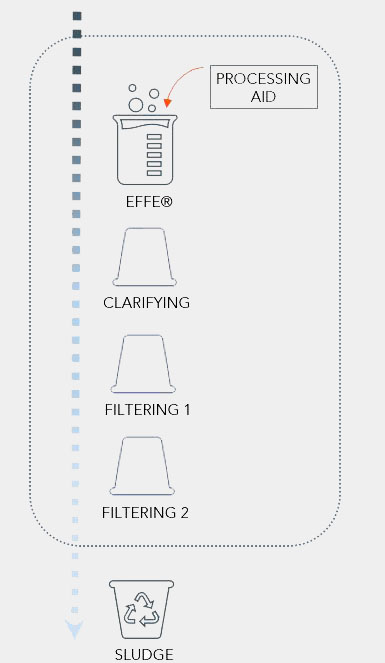EFFE® water treatment technology has been developed to meet the special requirements of our customers and end-users.
The solution is scalable and very flexible for various types of waters and tailored especially for:
EFFE® water treatment technology has been developed to meet the special requirements of our customers and end-users.
The solution is scalable and very flexible for various types of waters and tailored especially for:
As a result of the treatment process, the amount of impurities will be reduced to the desirable levels and the effluent can be reused in industrial processes or released into water bodies according to the local environmental requirements.
To give us a good challenge – contact us!
Bacteria and other organisms that live inherently in water can split hazardous chemicals or modify harmful substances into another form.
EFFE® creates suitable circumstances for aerobic micro-organisms. The increased oxygen level improves their ability to live and grow, which is seen in their increased activity in biodegrading the organic matter by aerobic digestion.
The online measurements and the SCADA-system are essential parts of the runoff water treatment method. The fully automatic self-adjusting system allows to maintain the same efficiency even when water quality and quantity are changing.

EFFE® water treatment plants are preassembled at the Hydrometa’s production site in Raisio, and are delivered as a complete solution to the customers.
The functioning of EFFE® plant is ensured all year round by smart automation, HVAC system and thermal insulation. The process can be locally or remotely controlled.

During the EFFE® treatment process the dissolved gases in water such as radon, carbon dioxide, methane, arsenic, hydrogen sulphide, will be released as a gas phase and removed from the process. At the same time oxygen is mixed into the water.
This ensures the good growth conditions for the microbes in the clarifying step and the particles will settle down as a sediment.
EFFE® GX reduces gaseous substances and hazardous chemicals in runoff water.
The water treatment method EFFE® RA-V is developed for runoff waters in mold and fertilizer industries, in landfills or in quarries where the explosive residues are present.
The optimal process result can be achieved by adding an appropriate and effective adjuvant or flocculant into the water.
SPEF equipment is a floating platform, which has been developed to dissolve oxygen into the water that bacteria can utilize in their breakdown processes.
SPEF has given excellent results during the in-situ trials and in long-term development succeeding to dissolve up to 15 mg / l of oxygen into the water.
Stagnant waters typically have a low oxygen level.
When combined with the high organic load and suspended solids, the lack of oxygen causes the turbidity, algae growth and foul odour in ponds with stagnant water.